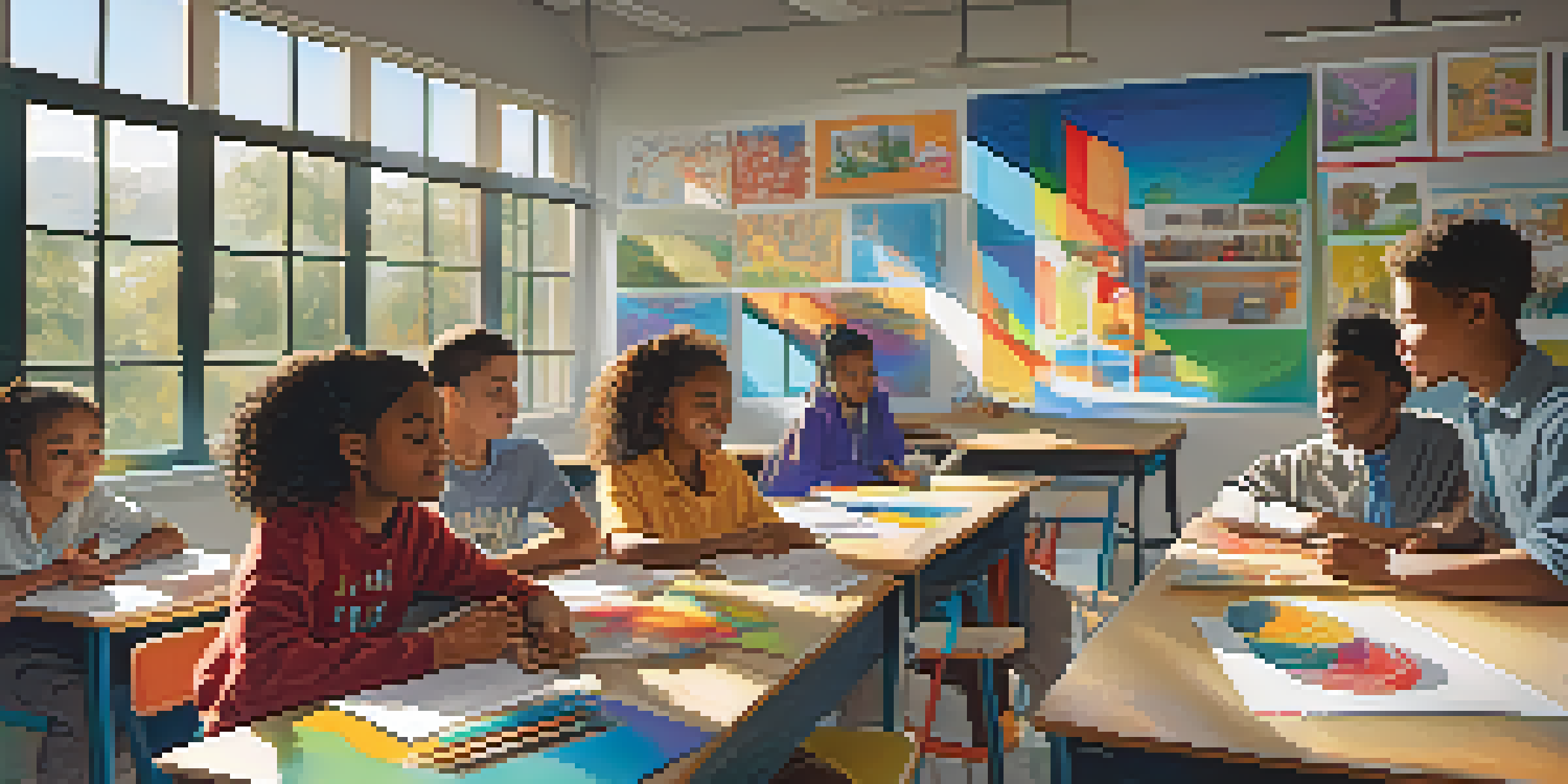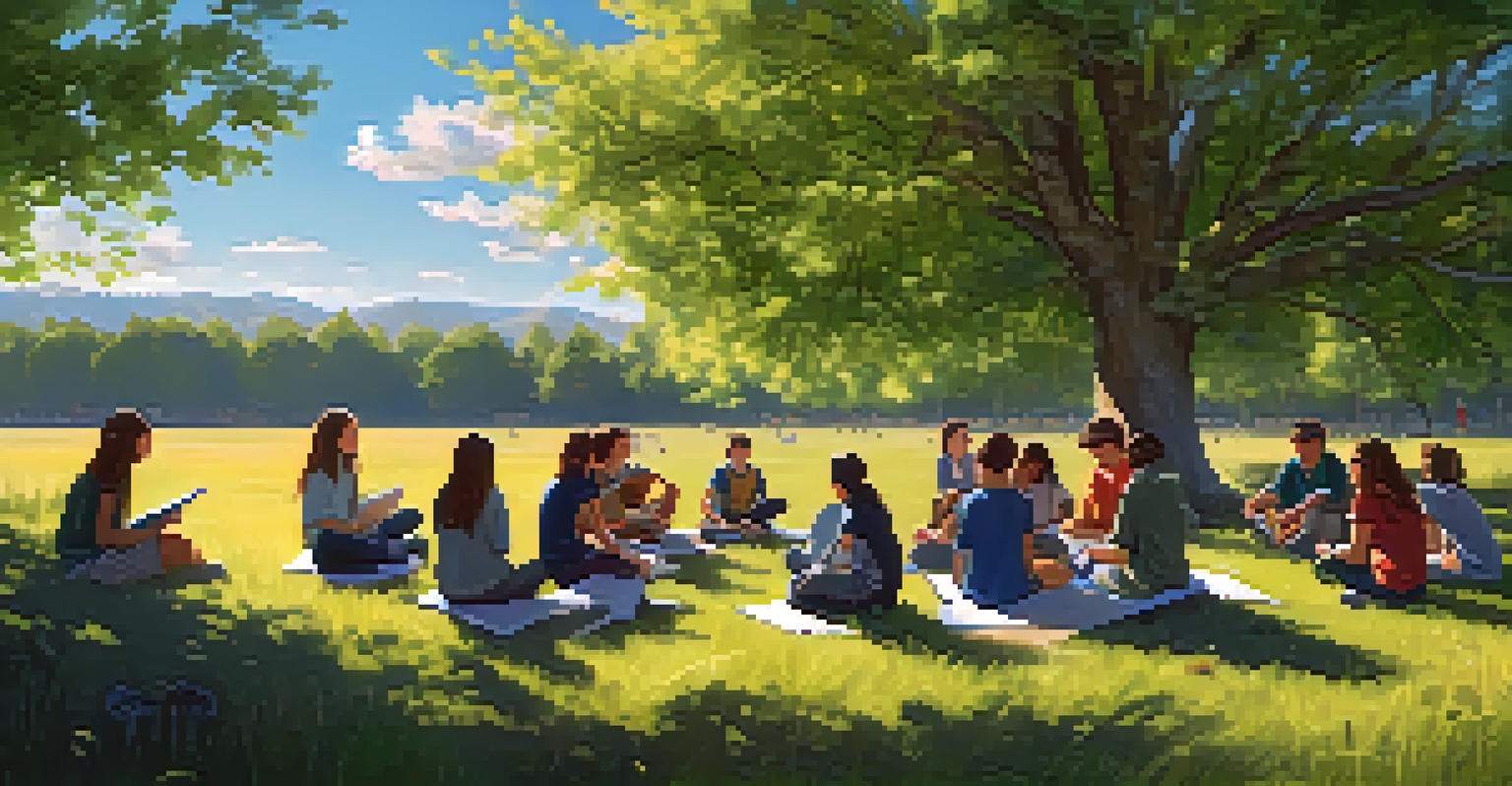Developing Critical Thinking Through Learning Environments

Understanding Critical Thinking and Its Importance
Critical thinking is the ability to analyze facts, evaluate information, and make reasoned judgments. It’s essential in today's fast-paced world, where we are bombarded with information from various sources. By honing this skill, individuals can navigate complexities and make informed decisions that impact their personal and professional lives.
Critical thinking is the key to creative problem solving.
In educational settings, critical thinking is a cornerstone of effective learning. It encourages students to question assumptions, explore different perspectives, and develop their unique viewpoints. This not only enhances their academic performance but also prepares them for real-world challenges, fostering resilience and adaptability.
Ultimately, nurturing critical thinking is about empowering learners. When students feel confident in their ability to think critically, they become active participants in their education. This sense of agency can lead to greater engagement, motivation, and success in both their studies and future careers.
The Role of Diverse Learning Environments
Learning environments can greatly influence how critical thinking skills develop. Traditional classrooms often focus on rote memorization, which can stifle creativity and independent thought. In contrast, diverse environments—like collaborative spaces, online learning platforms, or real-world experiences—encourage exploration and inquiry.

For example, group projects in a classroom setting allow students to share ideas and challenge each other's viewpoints. This collaborative approach fosters a sense of community and promotes dialogue, where students learn to defend their ideas while considering others' perspectives. Such interactions are crucial for honing critical thinking skills.
Critical Thinking Empowers Learners
Nurturing critical thinking equips students to question assumptions and engage actively in their education.
Additionally, experiential learning environments—such as internships or fieldwork—provide students with practical applications of their knowledge. These opportunities enable learners to confront real challenges, assess situations, and devise solutions. By engaging with the world around them, students can cultivate a more nuanced understanding of critical thinking.
Encouraging Questioning and Curiosity
Cultivating a culture of questioning is vital for developing critical thinking. When students are encouraged to ask 'why' or 'how', they begin to explore deeper layers of understanding. This inquisitive mindset fosters curiosity, which is a driving force behind critical analysis and creative problem-solving.
The most important thing we can teach our children is how to think, not what to think.
For instance, educators can create a safe space for students to express their thoughts and challenge existing ideas. By promoting open dialogue and valuing diverse opinions, teachers help students feel comfortable in their curiosity. This environment encourages learners to pursue answers and engage in meaningful discussions.
Moreover, fostering curiosity isn’t limited to the classroom. Encouraging students to explore their interests outside of school—through clubs, hobbies, or community service—can spark new questions and avenues for critical thought. This holistic approach to learning empowers students to take charge of their educational journey.
The Impact of Technology on Learning Environments
Technology has transformed learning environments, making information more accessible than ever. Online platforms, educational apps, and virtual reality experiences can enhance critical thinking by providing interactive and engaging content. These tools allow students to explore complex ideas in ways that traditional methods may not.
For instance, simulations and gamified learning experiences offer immersive opportunities for problem-solving. Students can experiment with different strategies in a risk-free setting, encouraging them to think critically about their choices and outcomes. This hands-on approach allows learners to grasp concepts more deeply.
Diverse Environments Foster Growth
Collaborative and experiential learning environments enhance critical thinking by promoting exploration and inquiry.
However, it’s essential to strike a balance between technology use and face-to-face interactions. While tech can offer rich learning experiences, it’s equally important for students to engage in discussions and collaborations with their peers. This synergy can enhance critical thinking skills by blending digital exploration with social learning.
Creating Collaborative Learning Opportunities
Collaboration is a powerful catalyst for critical thinking development. When students work together, they share diverse perspectives and challenge one another’s ideas. This dynamic not only sharpens their analytical skills but also enhances their ability to communicate effectively.
Group discussions, peer reviews, and team projects are excellent ways to foster collaboration. These activities encourage students to articulate their thoughts clearly and consider alternative viewpoints. As they negotiate differences and build consensus, they practice essential skills that are invaluable in both academic and professional settings.
Moreover, collaborative learning cultivates a sense of belonging and community. When students feel connected to their peers, they are more likely to engage actively and take risks in their learning. This supportive atmosphere contributes to richer discussions and deeper critical thinking.
The Role of Reflection in Critical Thinking
Reflection is a crucial aspect of developing critical thinking skills. It involves looking back on experiences, analyzing what worked, what didn’t, and why. This process helps learners internalize their insights and apply them to future situations.
Encouraging students to maintain reflective journals or engage in group reflection sessions can deepen their understanding. By articulating their thoughts and feelings about their learning experiences, students can identify patterns, make connections, and refine their thinking processes. This self-awareness is key to becoming a more effective critical thinker.
Reflection Enhances Learning Process
Engaging in reflection helps students internalize their experiences and develop a growth mindset for better critical thinking.
Furthermore, reflection promotes a growth mindset, where students view challenges as opportunities for learning. This positive approach not only enhances their critical thinking but also builds resilience. By learning to embrace failure as part of the process, students become more confident in their abilities.
Assessment Strategies to Support Critical Thinking
Assessing critical thinking skills can be challenging, but it is essential for fostering these abilities. Traditional tests often focus on memorization, which doesn’t reflect a student’s true critical thinking capacity. Instead, educators should consider alternative assessment strategies that emphasize understanding and application.
For example, project-based learning assessments allow students to demonstrate their critical thinking skills in real-world contexts. By working on meaningful projects, students can showcase their ability to analyze information, make decisions, and communicate effectively. This approach provides a more holistic view of their capabilities.

Additionally, incorporating reflective assessments, such as self-evaluations or peer feedback, encourages students to think critically about their own learning. This process reinforces the importance of self-assessment and continuous improvement, ultimately helping students to become more adept critical thinkers.